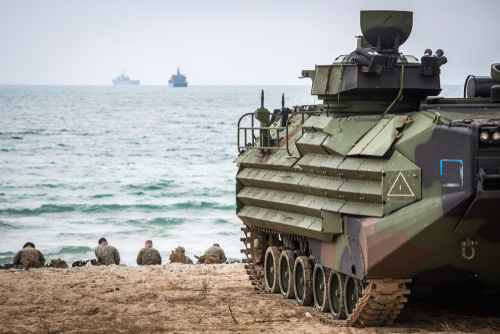On Oct. 1, the Romanian Parliament has granted approval to the Romanian Ministry of National Defence (MApN) to purchase 44 American AAV-7 amphibious assault vehicles, valued at some $270 million.
In late September, Bucharest signed a $920 million loan agreement with the U.S. DoD’s Defense Security Cooperation Agency (DSCA) to modernize and develop its defense capabilities and military industry.
The United States is selling the amphibious armored personnel carriers from its Marine Corps inventory under the Foreign Military Sales (FMS) program. Romanian Insider further elaborated on the purchase, writing that “this procurement is part of the Army Transformation Program, set to be completed by 2040, and will bring the Romanian Army in line with NATO standards.”
The MApN told members of the Romanian Parliament in writing before the vote that the purchase had already been approved by the country’s Supreme Council of National Defence in May. They also noted that Romania must modernize its navy’s equipment and improve its operational capabilities.
Romania has 245 kilometers of coastal territory along the Black Sea, which by way of the Bosphorus Strait leads all the way to the Atlantic Ocean.
As noted by Romanian Insider, the AAV-7 “is designed to transport Marines and equipment from ship to shore and across hostile territories,” with a max capacity of 25 and a range of 300 miles on land and 20 nautical miles in the water. The vehicle also features an Mk 19 grenade launcher or an M242 Bushmaster, plus an M2HB .50-caliber machine gun.
Upon signing the loan agreement with Romania last month, the U.S. State Department called the country “a valued U.S. partner and Ally,” adding that “this significant loan agreement will further strengthen NATO’s Eastern Flank.”
With the ongoing war in Ukraine and continued concerns surrounding possible further Russian aggression westward, increasing readiness along the eastern border of NATO territory has been a key priority of the alliance.






